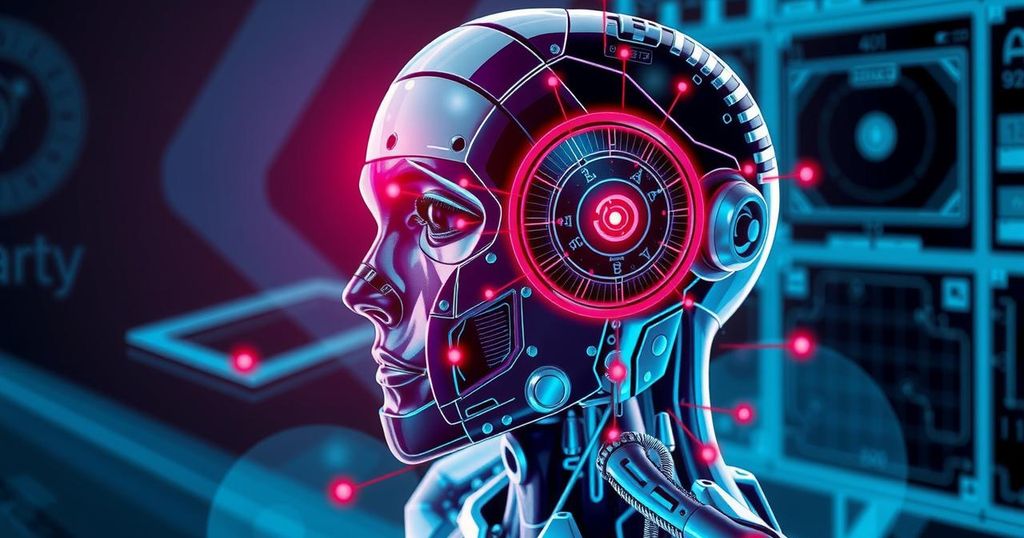Understanding Augmented Intelligence: Empowering Human Decisions with AI
Augmented intelligence enhances human decision-making by utilizing AI technologies to assist rather than replace humans. Through machine learning, it analyzes vast datasets, allowing industries like healthcare, retail, and finance to improve outcomes and efficiency. Unlike traditional AI, which automates processes, augmented intelligence thrives on collaboration, where human intuition is key in decision-making.
Imagine a world where your computer doesn’t just crunch numbers but collaborates with you like a trusted partner to amplify your decision-making prowess. This is the essence of augmented intelligence—a transformative approach to artificial intelligence (AI) that enhances human capabilities instead of replacing them. It uses sophisticated machine learning algorithms to sift through vast oceans of data, empowering humans to make informed choices that resonate with their insight and experience.
In various industries, from healthcare to retail, augmented intelligence sparks innovation. For instance, consider a busy supermarket: while customer foot traffic dances erratically across the aisles, algorithms analyze these patterns to suggest optimal product placements, ultimately boosting sales. Surgeons, too, benefit as augmented intelligence aggregates complex medical histories, presenting actionable insights that could mean the difference between life and death.
In this technological partnership, augmented intelligence thrives on a principle of collaboration, melding human intuition with AI’s analytical prowess. Unlike traditional AI striving to automate jobs entirely, augmented intelligence cherishes the vital human touch. Instead of dictating actions, it augments decisions. In doing so, it defines a new frontier in machine-human interaction where smart systems enhance our natural skills.
As Frances Karamouzis, a leading voice from Gartner, illustrates, “Artificial intelligence is one of many, many different technologies, and augmented intelligence is a manifestation or outcome of how you choose to implement those AI technologies.” This belief echoes in every sector exploiting its potential.
Augmented intelligence collects and interprets varied data streams like an artist selecting colors for a masterpiece. It combines structured information with the abstract complexities of human emotion and social context. Think of it as a chess game where the computer collaborates with a player, shifting strategies based on the player’s insights—a powerful union that leverages human strengths.
As Kambhampati highlighted, the difference between a purely automated AI and an augmented one lies in social intelligence—the ability to understand a human’s intentions and communicate effectively. In real-world applications, such partnership is exemplified by self-driving cars, shopping analytics, and sophisticated healthcare diagnostics, all woven together by the thread of augmented intelligence.
In finance, companies deploy augmented intelligence to scrutinize individual risk factors with precision, while customer service bots offer immediate insights to representatives, creating a seamless service experience. Meanwhile, manufacturers use predictive analytics to foresee potential issues before they derail production lines.
Ultimately, augmented intelligence stands as a bridge between human insight and machine efficiency, a promise that technology can enhance rather than diminish our roles. Each application weaves a story of partnership, illustrating that when machines and humans unite, the possibilities are limitless.
The concept of augmented intelligence represents a paradigm shift in the way we interact with technology. While traditional artificial intelligence often aims to automate tasks and decisions, augmented intelligence focuses on collaboration between humans and machines, enhancing the decision-making process without replacing the essential human element. This novel approach leverages machine learning and deep learning, enabling systems to analyze extensive datasets, simplifying the complexity of information overload, and presenting valuable insights for improved decision-making in various fields such as healthcare, retail, finance, and manufacturing.
In conclusion, augmented intelligence emerges as a revolutionary force harnessing the power of AI to complement human capabilities. By fostering collaboration, it reshapes our approach to decision-making, ensuring that technology acts as a partner rather than a competitor. From enhancing medical diagnosis to improving retail experiences and refining financial assessments, augmented intelligence proves invaluable in empowering humans to navigate complexities with confidence and insight, defining a future where technology and humanity coexist harmoniously.
Original Source: builtin.com




Post Comment